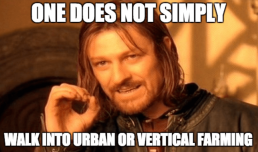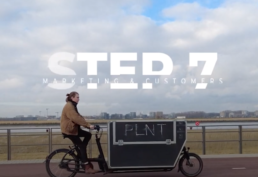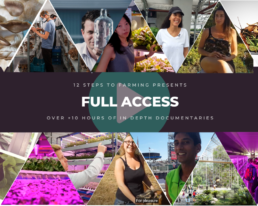
The 12 steps explained
The 12 steps are structured content that will help you understand how to expand or start a sustainable urban farming business.
Here are some insights into the 12 steps:
Step 1
Why do you farm?
Like Frederik Nietzsche onze said: “He who has a why to live can bear almost any how.”
So the first step is all about the “why”. Some farmers do urban farming because it can make cities more beautiful and others do it because they want to change the way food is produced.
Whatever reason you chose to get into urban farming, be convinced about it, make sure it makes your clock tick!
Step 2
Story and background
The most commonly used reason not to do something is: “I don’t have the right background”. But the 12 steps pioneering farmers prove that that is a false reason. They show us how they worked with their backgrounds, build on their strengths and overcame the challenges connected to their backgrounds.
“No hero is born perfect, he/she becomes a hero by overcoming his/her challenges” – Quote from someone stating the obvious
Step 3
How to chose your crops
Step 1 and 2 are about building your character, with the third step you are actually in the farming business.
How to chose what to grow can be one of the easiest questions to answer, but it can also be the most difficult. You can chose your crops out of love, because the market is open to it, or because it makes the food system more circular. Every farmer has a different response to this question. But only the 12 steps farmers will tell you how they found their answer.

Step 4
Business Model
There’s no business without a business model. And as our society does not yet value food as we should value it, farming tends to be hard to be profitable. That’s why the pioneering urban and vertical farmers have to adopt alternative and very cunning business models.
All 12 steps are important, yet this is probably the most vital step of all.
Step 5
All about growing & technology
When you reached this step, you already know what to grow and what your business model will be. Time to think about how you will grow your crops. Do you want to grow basil in high-tech-fully-controlled-environment-multi-layered hydroponics, or do you want to grow it in soil in the outdoors? Or maybe you want to grow mushrooms on coffee-waste?
Every crop has different needs and every business needs a different level of automation. As always, there’s no one stop shop solution for your farm, this is a highly customised step.

Step 6
Resources, input & output
There are two important reasons for this step: (1) Efficiency en (2) sustainability.
As farming is a difficult business, it’s important to grow the most food with the least amount of resources and least amount of waste. And this is obviously highly connected to sustainability.
Learn how the farmers deal with this. How do they apply the circular economy, or the principles of cradle to cradle. It’s very important to map out and measure the resource streams of your farm.
Step 7
Marketing & Customer
The foundation of any good marketing and an excellent relationship with your customers, is knowing your market and your customers. In this step you’ll find out how the 12 steps farmers got to know their market and how they used it to find and strengthen the relationship with their customers.
This is not always what it seems and can vary greatly from farm to farm! You will be suprised!

Step 8
Partners or competitors
We at the 12 steps are a big fan of cooperation, especially when it comes to something as important for human health as food. In this step you’ll learn how local and international partners will help you get your products to the consumer the way you want it.
Step 9
Location, Architecture & Agritecture
This is actually a pretty broad subject as there are so many different spaces inside or outside a city where you can grow food. In the interviews with the 12 steps farmers, you’ll learn the most important aspects that apply to most farms, while going into depth on the special cases like rooftop greenhouses or aquaponic installations.
On the right you see a picture of the location of a rooftop farm by Cultivate the City in Washington DC.

Step 10
Financing
You can have the best plan, an amazing location, the most experience and have nailed all other steps to run a successful urban or vertical farming business. Yet, in the end you need to find the finances for your farm. How do you go about it? How much of a buffer do yo need? Where can you get it?
Interesting questions, right?
Step 11
Law and Policy
Urban and Vertical Farming is so new, that in most places everyone is confused about the laws and policies around it. Chances are that there’s no real clarity on the subject in your area too. Yet, you have to find out about it. How do you do it? And how have others before you done it?
Prepare yourself to walk the lines of the grey zone!

Step 12
Final advice
We don’t want to be cheesy, but it’s true. Right before you embark on your personal journey, we want you to be equipped with some good and final advice. Final advice is powerful for the reason that it distills complex situations into some simple wisdom.
And with simple wisdom, step by step, you’ll accomplish your dreams and goals!
Now the time has come for you to take the next steps in your journey
Get access to the 12 steps and learn from the best
Get Full Access
Get Full Access membership of the 12 Steps to farming. You get access to:
(1) The 12 steps community and network
(2) 10 hours of in depth video documentaries, interviews & webinars.
(3) All future content
Join the 12 steps community and upgrade your urban or vertical farming journey now.
€7,99 / monthSign up now
